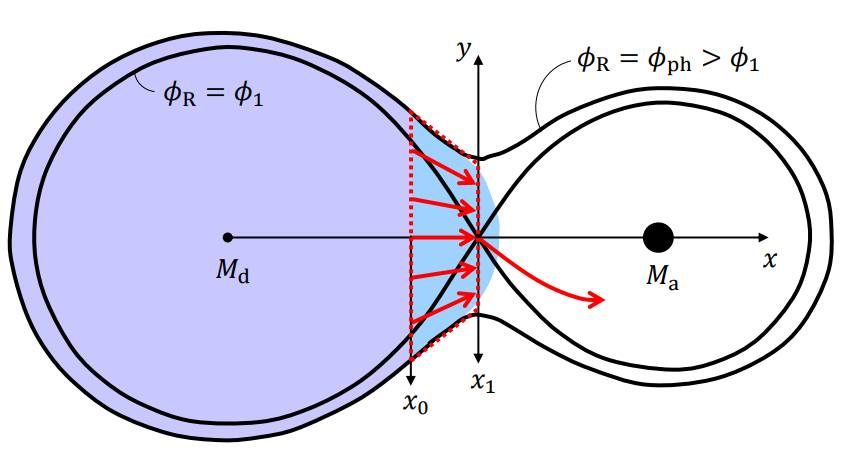In his first astronomy paper, PhD student Jakub Cehula looks at how is mass transfer in binary stars calculated in 1D stellar evolution codes. These codes work and produce binary evolutionary tracks so why look at this?

In most situations, it doesn’t matter too much how is mass transfer rate Mdot calculated – the star will simply overflow its Roche lobe more or less to achieve the desired Mdot. But things change when Mdot gets very high like when approaching common envelope evolution or merger. Also, the current prescriptions differentiate between optically thick (adiabatic) and thin (isothermal) regimes with quite different assumed flow streamlines. This is very theoretically dissatisfying.
To address this, Jakub constructed a new model, which recalculates the structure of surface layers near the Lagrange point. He obtains a set of 1D ODEs, where Mdot is the eigenvalue of the system. This is similar to how stellar wind calculations are done. Furthermore, Jakub found analytic solutions for isothermal and polytropic gas. These solutions give similar or identical results to previous schemes. Jakub also obtained solutions for a realistic EOS.
For realistic stars, the new model gives Mdot within a factor of 4 of existing schemes, but this has implications. For example, for 30 Msun low-metallicity star undergoing thermal timescale mass transfer, the new model predicts that L2 overflow and common envelope is more likely. One way to interpret the results is that there is a factor of ~2 systematic uncertainty in calculating Mdot, which implies that binary evolution outcomes should be robust against this level of uncertainty. Finally, the new model provides a conceptually straightforward way how to incorporate additional physics such as magnetic fields or radiation transport.
